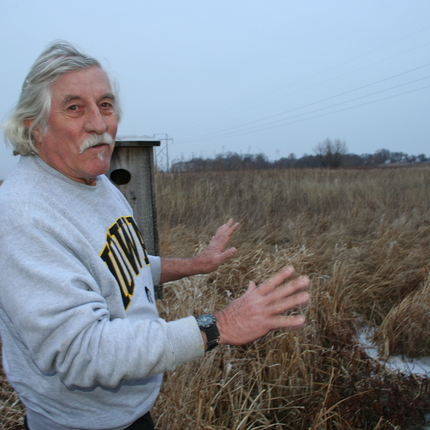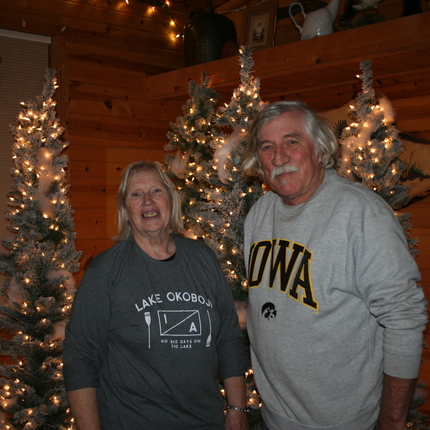By Lacie Dotterweich, former staff member
In this Iowa water quality blog series, we highlight Iowa farmers and water quality stakeholders to offer a variety of viewpoints and potential solutions. Previous blogs focus on Don and Bill Swanson, of Ottumwa, Iowa; Francis Thicke, of Fairfield, Iowa; Aaron Lehman, of Polk County, Iowa; Ray and Sue Meylor, of Polk City, Iowa; and Jerry Peckumn, of Jefferson, Iowa.
Bev and Dwight Rutter describe their prairie farm as a hobby gone nuts.
Surrounded by 600 acres of restored and native prairie grass (and hundreds of pheasants), rests Bev and Dwight’s native seed and plant nursery, The Prairie Flower, near Spencer, Iowa. At the nursery, they sell a wide variety of local, native prairie and wetland plants and seeds. The Rutters also provide services such as ecological consulting and planning.
Bev and Dwight had been conventional farmers until the early 2000s, until they realized they did not like the direction mainstream agriculture was going.
“We got tired of farming with all of the chemicals—we thought there had to be a better way,” Bev said. “It’s bad for the land, and it’s bad for the people.”
Today, they grow a modest 40 acres of conventional soybeans. The rest of their land consists of native and restored prairie grasses. Over the last 16 years, they have restored 40,000 acres of Iowa farmland into native prairie grass, mostly on government acres for farmers.
Bev and Dwight are passionate about taking good care of their land and water—they say it would weigh on their conscience if they didn’t.
“I want to see my grandkids grow to be old people, it’s that simple,” Dwight said.
They say prairie grasses on their land are excellent for slowing down water before it reaches the river, as their roots grow deeply into the ground. Over the years, Dwight has installed seven water retention ponds, and three dams to aid in slowing and cleaning the water.
“We need to protect the water and do the best we can,” Bev said.
The couple recently conducted a percolation test to determine how well their soil was absorbing water. Three samples of soil were tested: one from their conventional soil, one from their restored prairie, and another from their native prairie.
Their experiment showed the conventional soil took three minutes for 16 ounces of water to absorb, the restored prairie soil took about two minutes, and the native prairie soil took in the water as fast as they poured it in.
According to Dwight, Iowans can do three simple things to make a big difference for water quality and meet the goals of the statewide Nutrient Reduction Strategy. Firstly, manure management plans need to be changed to focus on phosphorus, not nitrogen.
“Most farmers are putting on four times the amount of phosphorus they actually need,” Dwight said.
Secondly, all tile lines leading into the river should have riparian buffers as biofilters installed at the end of them.
Lastly, there should be 100 feet buffer of grass on either side of rivers, streams, and creeks to clean the water that passes through.
Bev and Dwight believe grassed waterways and buffer strips are the best options available to farmers wanting to clean up the water.
“Cover crops have been hailed as the simple fix, but it is the least effective thing,” Dwight said.
Dwight believes cover crops are good, and plants cereal rye himself, but they aren’t as effective on their own as they would be combined with other practices.
The Spencer, Iowa, couple has proved that farmers can clean their water in simple, inexpensive ways. Bev and Dwight believe shared responsibility for water quality and installing infrastructure would go a long way in cleaning up Iowa’s waterways.
Feature photo: Dwight Rutter shows crystal clear water running through a creek in his prairie near Spencer, Iowa. | Photo by Lacie Dotterweich






